Clearly an expert in this field I am not. Truth be told, yesterday evening I felt a proper numpty (common Scottish word for feeling foolish). Photo uploads revealed that I had been sitting with binoculars watching empty damselfly larval skins – waiting for something to happen. Fortunately I took enough photos to share my new found wildlife knowledge.
I could blame the bright sunshine over the pond making it hard to see these fascinating little creatures. But I won’t. I guessed large red damselflies would visit yesterday so lunched by the pond. I’ve seen them mate and lay eggs many times over the last few years. It is always a delight to see them, but to see them is so hard when they are so small. You really need them to move to locate them. Keeping your eye on them takes concentration.
What caught my eye when I approached the pond yesterday was two damselflies fluttering away. I didn’t recognise them so went for my camera. They were light in colour and sparkled beautifully in the sunshine. My initial guess was that they had been a pair and had been mating in my pond and I was keen to know what they were. That’s when the pond watch properly started.
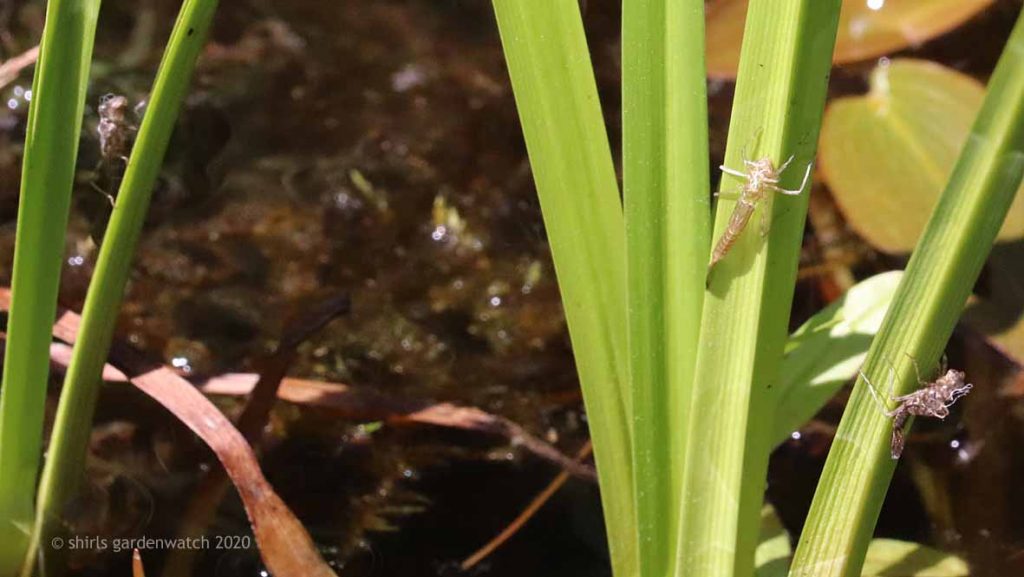
There were plenty of sturdy plant stems in the pond for damselfly larvae to crawl up and emerge into a pale coloured version of its species. I knew the stems could be used, but had never seen them. Although I have a fantastic field guide reference book for Britain’s damselfly and dragonfly’s, I hadn’t seen light coloured, larvae skins in it. Being tiny it was hard to find them switching from binoculars to camera.
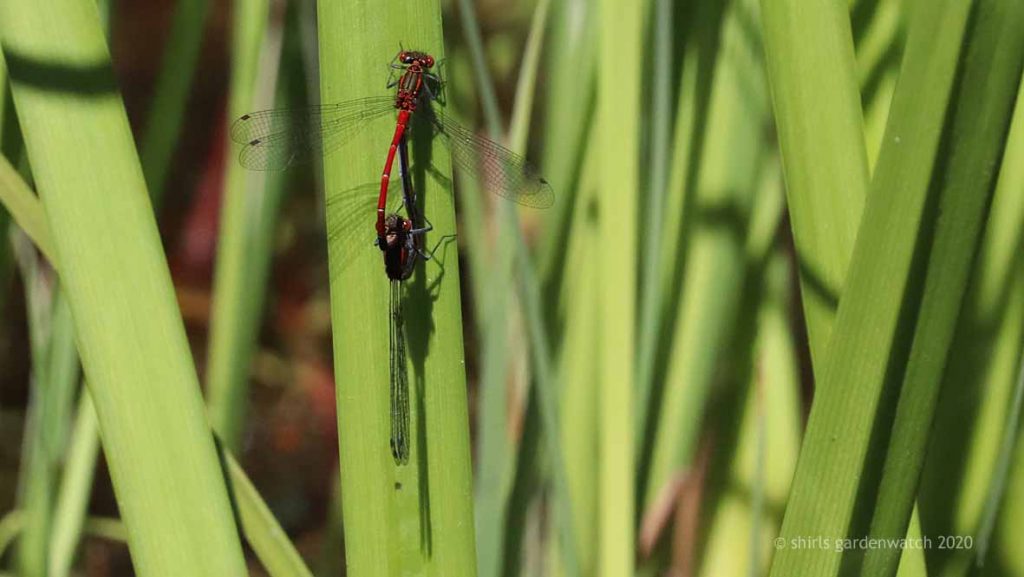
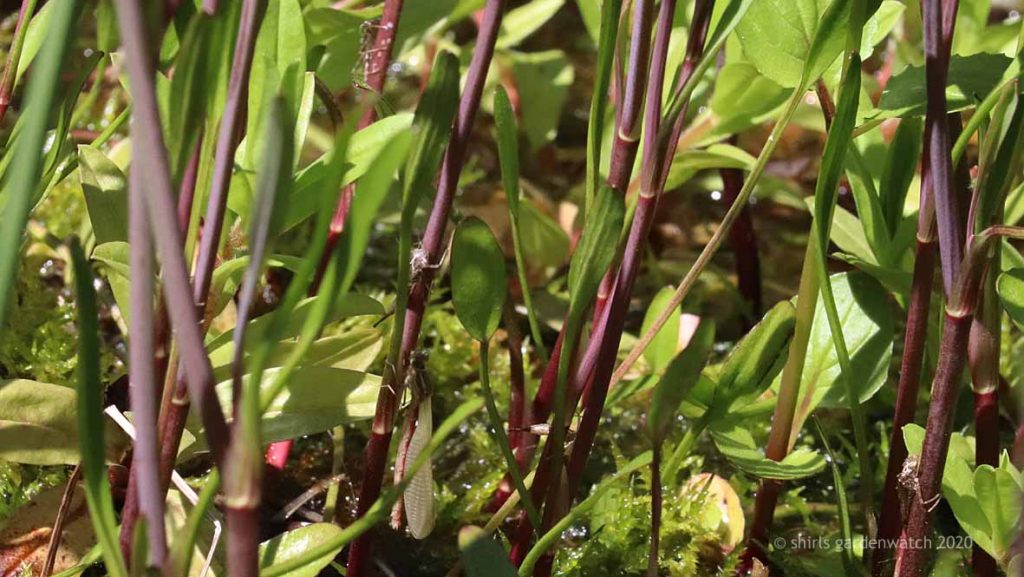
The image above shows how well camouflaged this damselfly was. How hard it was to spot too. It was the larvae skins around it that drew my binoculars there. A video clip taken here showed my biggest clue for future pond watching – movement. The skins didn’t. It was so odd seeing all the empty ones still hanging on. Skins varied in colour and shape so I’m guessing they were different species too.
The other damselfly species that I thought I knew lay eggs in this pond, was the common blue. I had seen it visit, but no mating. At least I thought that was the case.
Update June 2nd, in response to ID comment by Neil below (thanks Neil) and further sightings since this post was published. Twitter ID help last year, perhaps was correct that a newly emerged common blue was spotted on a nearby plant, I need to find that image to compare. Seeing two blue species that are so very, very alike was definitely a spot the difference for me. A hard one at that and I have an excellent reference book with brilliant images and detailed diagrams and descriptions. Studying that, I agree with Neil that my favourite photo capture from the weekend was the emergence of an azure damselfly from my wildlife pond.
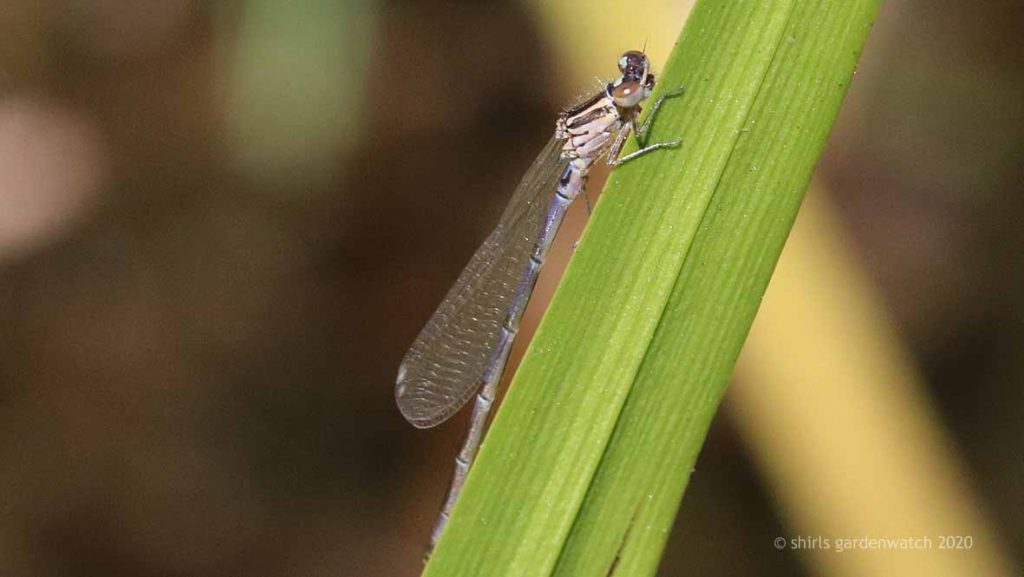
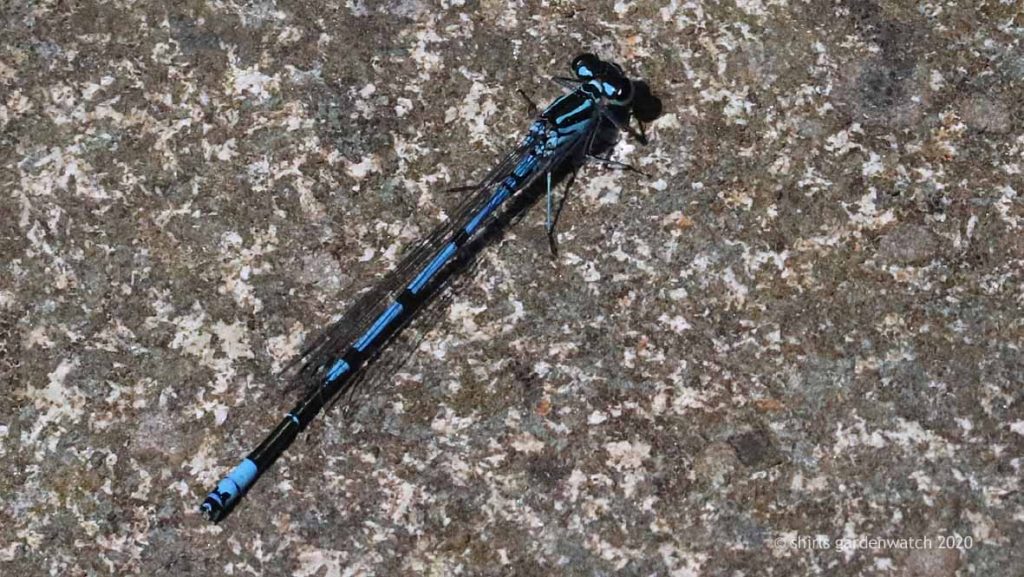
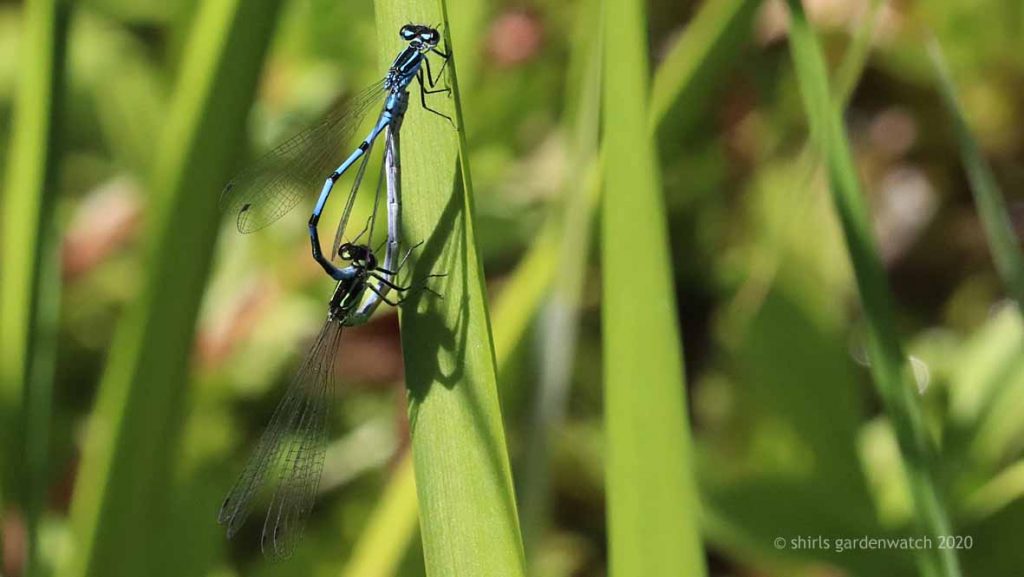
The weekend’s sparkly damselflies were very likely to have been two azure damselflies on their maiden flights. I definitely disturbed them when I approached the pond. During my pond watch I spotted others sparkle in flight too. I would have loved to have seen them take off. I spotted more today. I feel very lucky to be seeing them.
Thanks for stopping by, please do share your wildlife/garden stories from the weekend in comments. Especially if you’ve been on pond watch too. For regular blog visitors, of the past, I’d like to say hello again! I’ve never stopped gardenwatching and have many stories to share. Please bear with me as I make my way round the post editing and formatting of WordPress.
This post was published by Shirley for shirls gardenwatch in May 2020.
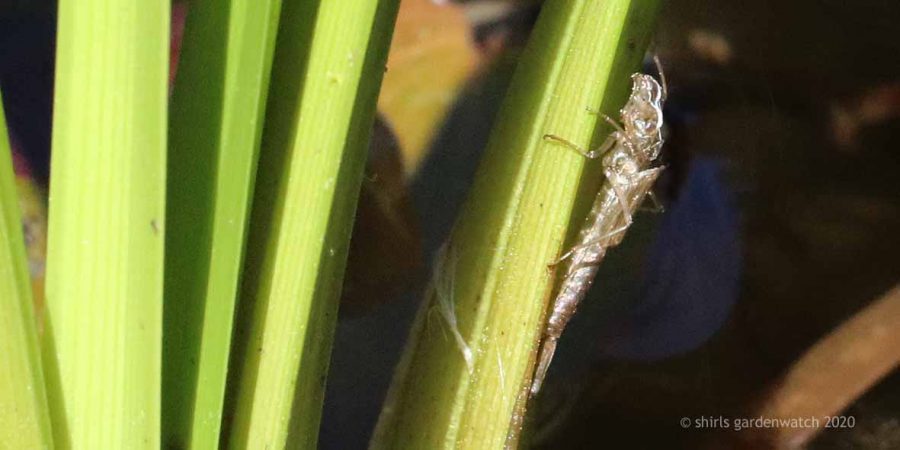
The damselfly labelled Common Blue is an Azure as your photo shows a short black line below the thick black line which Common Blue lacks. These blue damsels can be tricky!
Hi Neil, thanks for stopping by and leaving your comment on this ID. I have updated this post with new images from yesterday too. A possible sighting of an orange tip butterfly took me out with camera to an area near the pond. I saw flashes of blue.What a surprise to spot two pairs of azure damselflies mating with another male in waiting. There were three large red males trying to hold the territory too. The busiest day I’ve seen by the pond so far. I would have missed the lot if I hadn’t spotted a female orange tip.
Surprising how often that happens- you spot one thing & then several other things turn up! Great stuff.
Absolutely, so many times that has happened here over the years. Yes, it really is great stuff 😁
Damsels and dragon are fascinating and surprisingly photogenic
Yes, they are Sue. I find myself transfixed watching them.They are just so tricky to follow with the camera being so small. I’ve been trying to better organise my photos in the last few days and hadn’t realised I had so many captures. When I built my pond I never expected this.